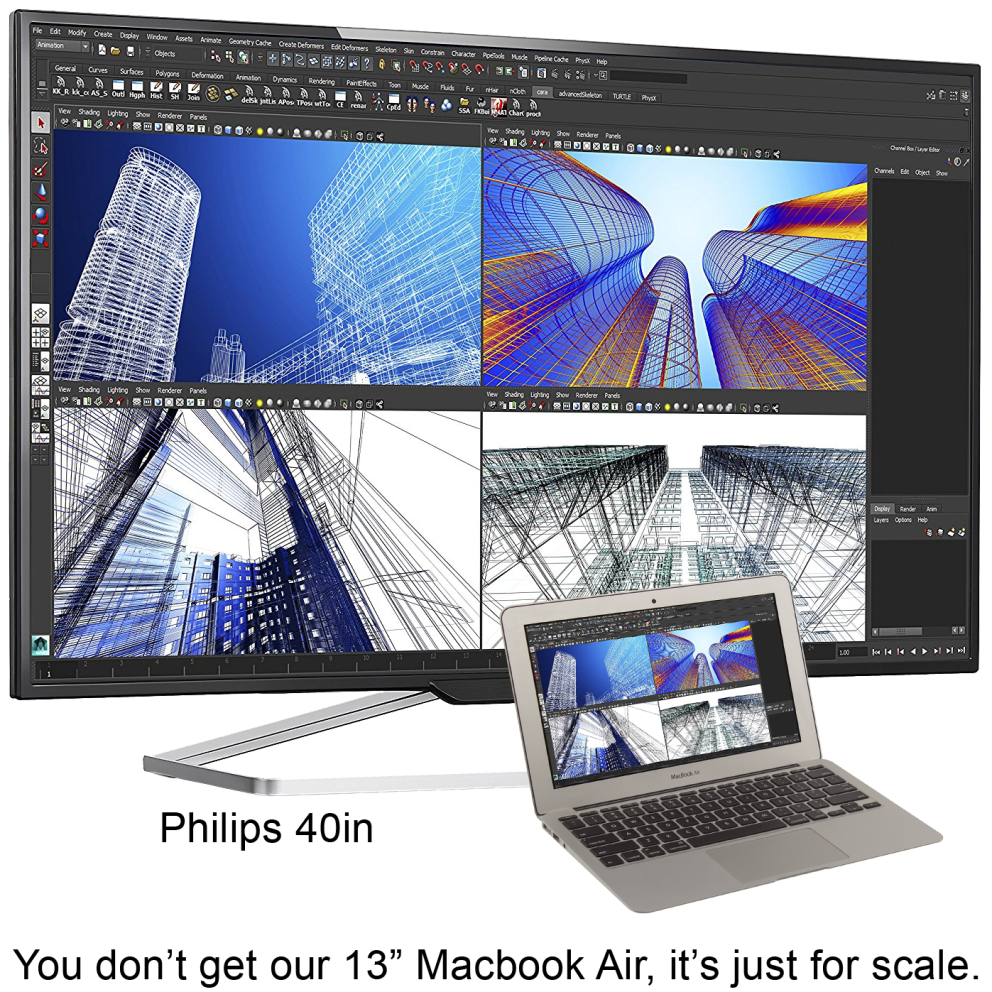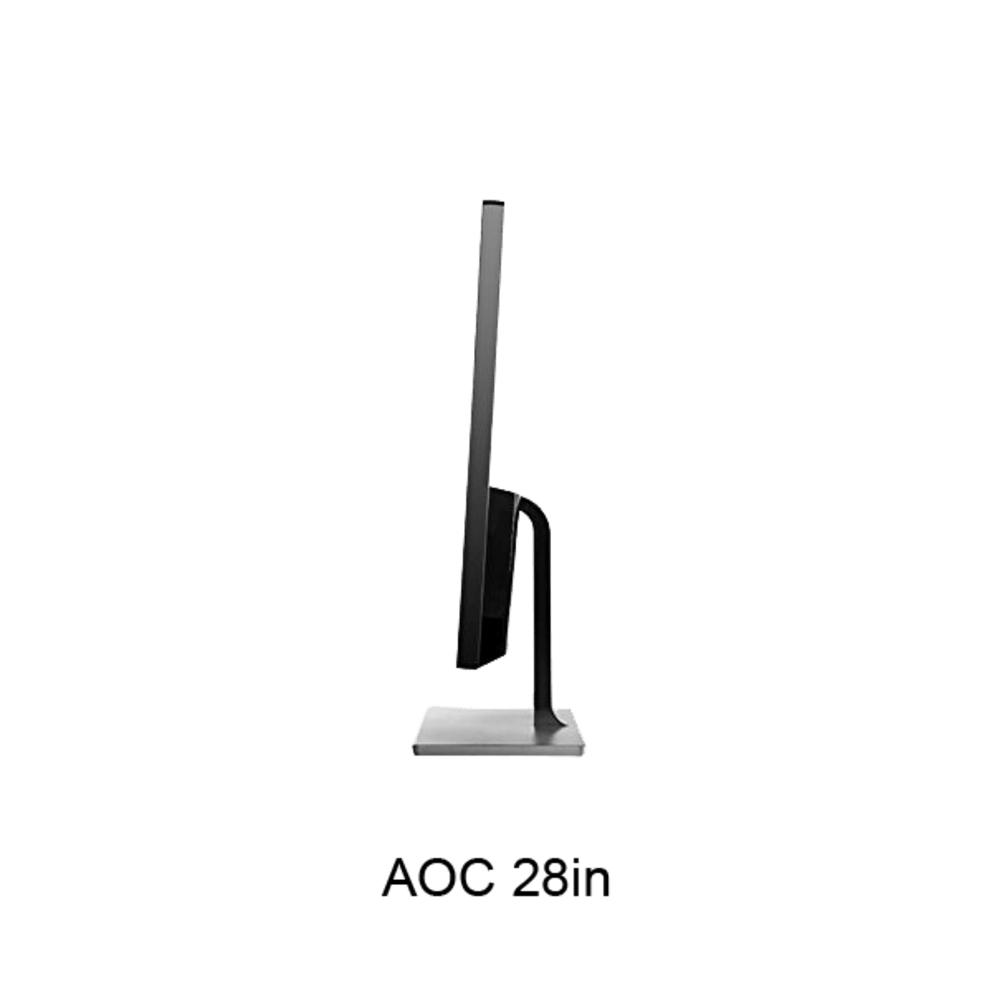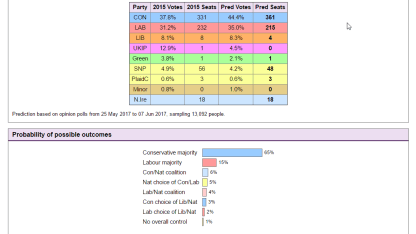AOC & Philips 4K Monitors (Refurbished)














Our Take
- Take your pick of a 28" AOC, 40" Philips, or 43" Philips 4K monitor at a price that will make you say “wow” or “huh” - For those who don’t know, a 43" monitor is huge. Like, bigger than any monitor you have probably ever seen in use. Check this too see exactly how much bigger it is than even a large 27" monitor. - 4K monitors have literally 4 times as many pixels as traditional ones, which means videos look better, your eyes experience less strain, and you can swan dive Scrooge McDuck style into a big vault of your own pixels- Although they’re the same resolution as 4K TVs, they have better chroma subsampling, shorter input lag, and other things that make them suitable for monitor-ing- The AOC 28 has FreeSync, AMDs brand of variable refresh rate, which is technically complicated but mostly means things look nicer and run smoother if your graphic card supports it- Ok, ok, we won’t bore you with every detail because we assume you either (1) already know a lot about this stuff, (2) are willing to look up reviews and specs for these models (check the links below), or (3) aren’t interesting in spending a few hundred bucks on a monitor - You can play games on them at 4K resolution if you have real good gaming PC (and, if you do, you probably already know more about this stuff than we do)- Model: U2879VF-B, BDM4065UC-B, BDM4350UC-B (The best way to get more info on these is to search for the model numbers with the word “review” (as we have linked to), which is basically only the case for computer peripherals. It’s like they started doing it and every other product line decided they needed their own model numbers, without consideration for whether it would be useful in any way)
A 4K In The Road
Today you’re witnessing a cataclysmic collision. Two systems that have been separate for decades – TVs and computer monitors – are finally merging. Until now the perceived wisdom has held that you shouldn’t use a TV, even a 4K one, as a monitor. (Watch this video for a technical explanation for why TVs make lousy monitors.) But these 40" and 43" 4K monitors are so big that you could reverse this paradigm and use your monitor as a TV. Kabloom – mind blown.
(The big ones we’re selling are “productivity monitors” which is a nice way of saying “everything you can do on a computer except play games.” That’s like calling everything that happens in your house that doesn’t involve playing a game “productivity.” Napping? Productivity. Eating peanut butter with a spoon in the middle of the night because preparing a bowl of cereal would be “too much hassle?” Productivity. Using your monitor as a TV and watching The Smurfs in bed? Productivity.)
Although the full ramifications of this monumental collision between monitors and TVs remain unclear, we can make some tentative predictions:
- Multi-monitor setups will be replaced with single large 4K monitors. Why mount 4 traditional monitors to your wall when you could use one giant one at the same effective resolution? This may break the hearts of some who get off on polymonitory, but it’ll cost less, look better, and not require obsessive cable management.
- Monitors may double as TVs. Why would we set up both monitors and TVs in the same room if they’re effectively the same? Setting up a desk/entertainment center combo that can perform both tasks might prove a temporary challenge, but where there’s a will (or a buck to be made) there’s a way.
- Hotels will finally provide monitors for doing work on the road. I (Meh writer @skemmehs) travel all the time, and one of my biggest gripes is having to use my tiny laptop screen. As an extension of the previous bullet, hotels could easily create setups that would allow you to both watch TV and do work on the same device. Though don’t hold your breath – it took them about 5 years longer than it should to let us stream our own Netflix accounts on their TVs.
Another major collision happened last week. Rumors are swirling in extremely nerdy circles that astronomers detected gravitational waves and other radiation from the collision of 2 neutron stars. While this observation, if confirmed, could radically improve our understanding of important cosmological phenomena, we still think this whole monitor/TV business is more important.










